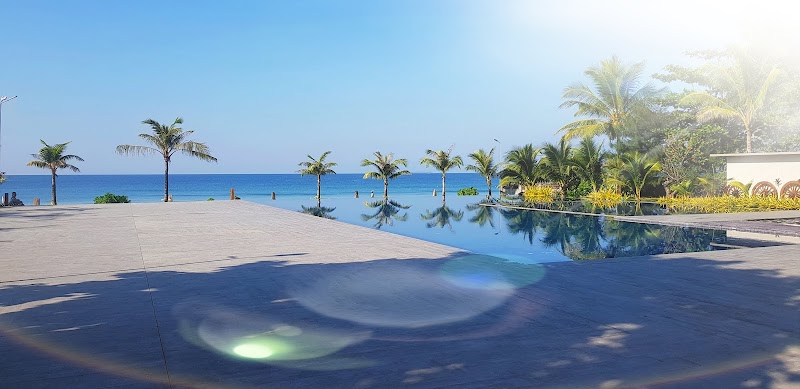
Exploring the Ayeyarwady Cultural Festival in Pathein: A Practical Guide to Tradition and Celebration
The Ayeyarwady Cultural Festival in Pathein offers a dynamic blend of tradition, craftsmanship, and local flavor set against the backdrop of Myanmar’s Irrawaddy delta. Experience vibrant performances, riverboat tours, and hands-on workshops that make this cultural celebration both immersive and accessible.
Wear Comfortable Footwear
Pathein’s festival routes cover mixed surfaces, including slippery riverfronts and uneven market streets. Durable, slip-resistant shoes will help you stay steady throughout the day.
Stay Hydrated
The tropical heat and humidity can escalate quickly, so bring a refillable water bottle and drink regularly during outdoor events and river excursions.
Plan for Sun Protection
Sunscreen, hats, and lightweight clothing protect against strong midday sun, especially during riverboat rides and open-air performances.
Schedule Festival Activities Wisely
Check event schedules in advance to prioritize performances and workshops, as some are time-limited and spread across different venues.
Exploring the Ayeyarwady Cultural Festival in Pathein: A Practical Guide to Tradition and Celebration
Every year in the Ayeyarwady Region, the city of Pathein comes alive with the Ayeyarwady Cultural Festival, an energetic showcase of local tradition and artistry. This festival offers visitors a chance to see the region’s heritage fiercely expressed through dance, music, crafts, and culinary delights. The bustling streets pulse with a variety of performances, each rooted in the rich history of the Irrawaddy delta.
Pathein, located on the western edge of the delta, is famous for its handcrafted parasols — the festival amplifies that craft with workshops and live demonstrations. Strolling through the festival, you’ll encounter the sharp rhythm of traditional Burmese drums, and the bright colors of hand-woven textiles worn by dancers who move with practiced grace. The market stalls tempt with fresh produce, local snacks, and vibrant souvenirs that capture the feel of the region.
The Ayeyarwady River itself sets the stage, daring the city to remember its connection to waterways that have shaped its economy and culture for centuries. During the festival, riverboat rides offer a practical, immersive way to experience the landscape that has defined the region while listening to tales of Pathein’s past.
To make the most of the festival, plan your trip around late December to January, when the weather is stable and the events are most active. Wear comfortable footwear for extended walks on mixed pavement and gravel surfaces; the city streets sometimes spill into more rugged, less maintained areas near the riverfront.
Hydration is vital. The tropical climate leans hot and humid by midday, so a reusable water bottle is a must, especially if you join outdoor events or river tours. Sunscreen and hats provide practical protection without dampening your enjoyment.
Whether you come for the performances, cultural workshops, or simply the vibrant atmosphere, the Ayeyarwady Cultural Festival delivers an adventure with a practical edge — learning the skills behind the crafts, tasting the flavors of the delta, and engaging directly with a community that honors its fiercely rooted identity. Approach the celebration ready to absorb and adapt, respectful of its deep history and energetic spirit.
Nearby Trips
All Adventures
Boat Charters
Water Activities
Adventures near Pathein, Ayeyarwady Region
Discover the unique and memorable adventures that make Pathein, Ayeyarwady Region special.
Frequently Asked Questions
What are the main highlights of the Ayeyarwady Cultural Festival?
The festival features traditional dance and music performances, parasol-making workshops, riverboat tours, and local food markets all celebrating the culture of the Ayeyarwady delta region.
How accessible is Pathein for travelers attending the festival?
Pathein is accessible by road and river transport from Yangon and other major cities. The town is walkable, and local guides are available to help visitors navigate the festival’s spread-out venues.
Are there any lesser-known spots to explore during the festival?
Yes, the docks along the Ayeyarwady River hold quiet corners where local fishermen gather, offering a glimpse into daily life beyond the festival buzz. Nearby rural villages showcase traditional farming methods still in practice.
What local wildlife might visitors encounter during outdoor parts of the festival?
Visitors may spot riverine birds such as kingfishers and herons along the Ayeyarwady banks, as well as occasional sightings of otters that maneuver the waterways nearby.
Is the festival family-friendly?
Absolutely. The festival includes craft workshops suitable for children, street performances, and relaxed daytime activities that appeal to all ages.
How can visitors respect the environment and culture during the festival?
Visitors should avoid littering, support local artisans by purchasing handcrafted goods, and engage respectfully with performers and communities by observing rather than disrupting sacred or private events.
Recommended Gear
Comfortable Walking Shoes
Provides steady footing over uneven streets and waterfront areas.
Reusable Water Bottle
Helps to stay hydrated in the heat and humidity.
Sun Hat and Sunscreen
Protects from intense sunlight during outdoor events and river trips.
Light Rain Jacket
Useful for unexpected showers or river breezes during wet seasons.
Local Insights
Hidden Gems
- "The quiet riverside temple at Paw Daw Mu, a few kilometers from Pathein"
- "Small riverside villages where traditional weaving is still practiced by hand"
Wildlife
- "Kingfishers and mynah birds frequent the Ayeyarwady banks during festival season"
- "Seasonal sightings of Irrawaddy dolphins further upstream, visible on longer river tours"
History
"Pathein’s history as a river port and parasol-making center dates back several centuries, influencing its blend of Burmese and Mon cultural traditions showcased during the festival."
